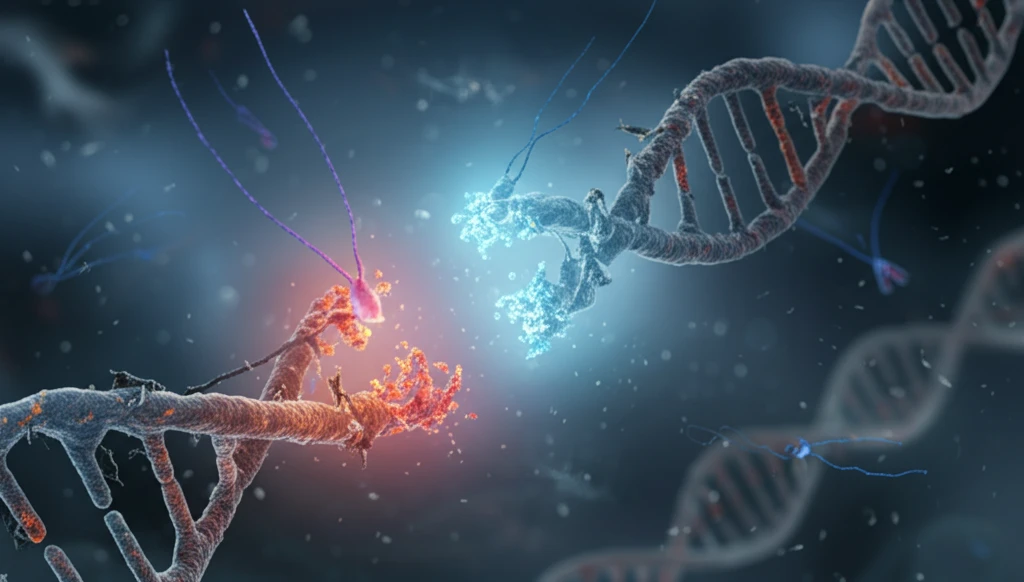
Can This 'Fountain of Youth' Enzyme Protect Your DNA?
"New research highlights the vital role of NEIL3 in repairing telomere damage and securing chromosome segregation, potentially extending cellular lifespan."
In the quest for understanding aging and cellular health, scientists are constantly exploring the intricate mechanisms that keep our cells functioning correctly. Among these mechanisms, DNA repair processes stand out as crucial for maintaining genomic stability and preventing the onset of age-related diseases. Telomeres, the protective caps at the end of our chromosomes, are particularly vulnerable to damage, and their health is critical for overall cellular well-being.
Recent research has shed light on the role of a specific enzyme, NEIL3, in repairing damage to telomeres. This enzyme appears to be a key player in ensuring that chromosomes segregate correctly during cell division, a process essential for preventing genomic instability. Understanding how NEIL3 functions could provide new insights into how we can protect our DNA and potentially extend our healthspan.
This article delves into the groundbreaking findings about NEIL3, exploring its functions, its interactions with other proteins, and its potential implications for cellular health and longevity. By understanding the science behind NEIL3, we can appreciate the importance of DNA repair and the possibilities it holds for future health interventions.
What is NEIL3 and Why Is It Important for Telomere Repair?

NEIL3, a member of the Nei-like DNA glycosylase family, is an enzyme that plays a crucial role in DNA repair. Unlike other members of its family, NEIL3 has a unique structure featuring an exceptionally long, intrinsically disordered C-terminal domain (CTD). This CTD sets NEIL3 apart and is believed to be key to its specific functions within the cell. Recent studies have highlighted NEIL3's critical role in repairing oxidative damage to telomeres, the protective caps at the ends of our chromosomes.
- Mitotic Defects: Loss of NEIL3 results in errors during cell division.
- Telomere Dysfunction: NEIL3 prevents telomeres from malfunctioning.
- TRF1 Interaction: NEIL3 interacts with TRF1 to localize to telomeres.
- Repair Complex: NEIL3 works with PCNA and FEN1 in a DNA repair complex.
Why This Matters
The discovery of NEIL3's role in telomere repair offers a promising avenue for future research into age-related diseases and cancer. By understanding how this enzyme works and how it interacts with other proteins, scientists may be able to develop new therapies to enhance DNA repair, protect telomeres, and promote genomic stability. This could potentially lead to interventions that extend cellular lifespan, reduce the risk of cancer, and improve overall health.
